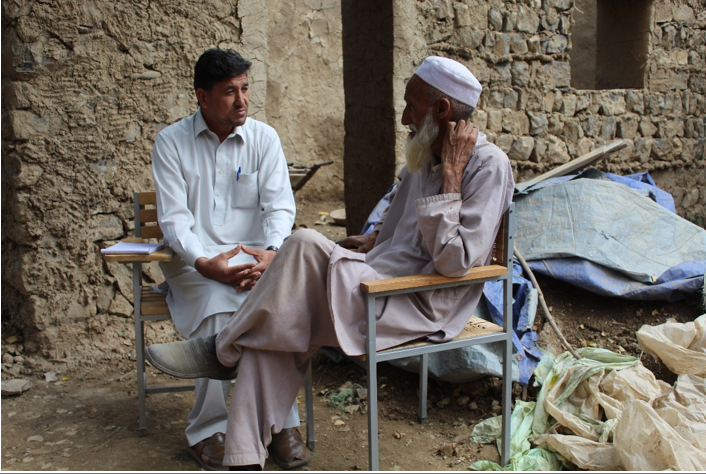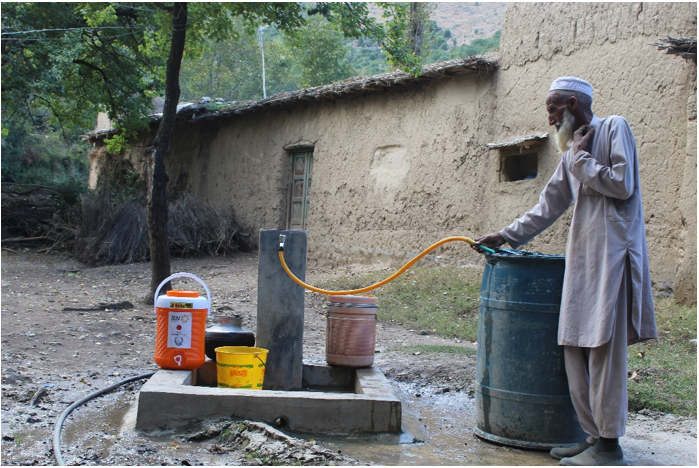
Pakistan
Period: October 2005〜
Regions:
Khyber Pakhtunkhwa (KP) Province
Tharparkar District, Sindh Province
Dera Ismail Kahn (D.I. Kahn) District, KP Province
Pakistan Agricultural assistance to flood-affected people in Sindh, Pakistan (from September 2023 to present day).
Background of the project site
Dadu District in Sindh Province is one of the districts most affected by the flooding, negatively impacting 57.4% of the population (849,380 people) and just under 40,000 hectares of agricultural land inundated. According to the Integrated Food Security Level Classification (IPC), Pakistan is classified as a 'humanitarian crisis.'
Most farmers in the area mono-cultivate, meaning they have a high risk of losing their harvest in the event of a disease outbreak.
Even before the flooding, yields were low due to reduced production of native wheat seeds, which made crops vulnerable to disease. Livelihoods in the region depend on agriculture, however there existed no information network on agricultural efficiency.
Then the 2022 floods hit, and farmers in the area lost what was left of their last crop, as well as the seeds they had for future planting. Farmers lost their income and possible future income.
At JEN, we believe that farmers in the area originally lacked sufficient agricultural knowledge, skills and networks, as well as technology, training and support in farming efficiency and safe seed storage. Therefore, this population needed support in building sustainable systems in the community to maintain and increase seed production.
Due to the large land area of the Dadu County, JEN focused its agricultural support in three areas within the county. The focus of the support is to build sustainable systems and reduce food insecurity.
Overview
First, JEN identified the most vulnerable farmers among those affected by the floods and labeled them as participants. From said participants, farmers with prior agricultural knowledge were selected to lead the training for a group of less experienced farmers, who after instruction were later designated as leader farmers. JEN trained the farmer leaders on modern farming methods, which they then passed on to other farmers. This project structure allows the participating farmers to view the project as 'their own project' by being leaders and eventually taking ownership of trainings. All participating farmers are given seeds, fertilizers, and other farming essentials to plant their crops. The following season, each farmer will provide seed to two more households, train a larger group of farmers, plant their crops with the provided seed, and provide harvested seed to more farmers. By repeating this process, the aim is to build a sustainable system that strengthens the 'farmer power' of the community. This project will eliminate food insecurity in local communities and is made possible through a partnership between JEN and Zensho Holdings Ltd.
Throughout this project, we will simultaneously build a network among farm households, mainly leader farmers, as well as between farmers and the government's agricultural extension department and other stakeholders.
Improvements
This project uses seeds of domestic wheat, barley, and mustard seeds, which have been proven to not significantly reduce yields even after repeated self-collection. Each time a farmer harvests the seeds they receive, they are responsible to provide seeds and technology to another two farmers. This structure aims to build a system that relieves food insecurity while strengthening 'farmer power'. In other words, this will increase the number of farmers who are able to select the right seeds for their crops and learn helpful techniques so that they can gradually increase the number of farmers who are able to farm sustainably. The first 185 households will provide seeds and technology to the next 370 households (each farmer will provide two), and then the 185+370 households will provide seeds and technology to two more households each the following year. This will result in 1,665 households who will be able to farm sustainably after two years, and 4,995 after three years. The hope is that this will strengthen local farmers and enable them to produce a stable crop yield.
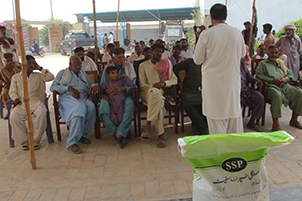
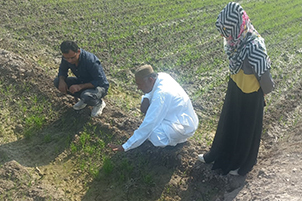
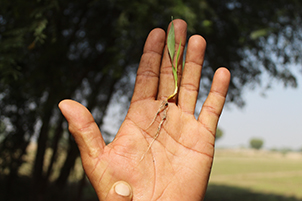
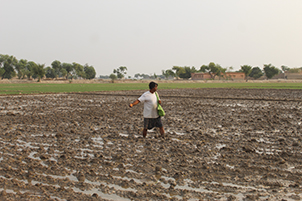
Security resilience strengthening project for flood-affected farmers (from September 2023 to present)
Overview
This initiative will provide flood-tolerant multi-crop seeds, fertilizers, insecticides, pesticides and sealed seed storage bags. In addition, farmers who have a great deal of knowledge, experience, and skills in growing specific crops will be identified and trained as lead farmers, in collaboration with the Department of Agriculture. These farmers will be trained to become lead farmers who will mentor and support other farmers. With these inputs, local farmers will be able to resume crop production, increasing crop diversity and yields, safely storing good quality seed and increasing flood resilience, with the aim of enabling sustainable crop production.
What the assistance will improve
The project aims to improve the food situation and increase agricultural productivity. It will enable participants to learn efficient modern farming methods (e.g. receive flood resilient seeds) and network with stakeholders. The aim is to increase crop production, reduce the impact of natural and other disasters that may occur after the project ends, and to become equipped with methods to recover quickly from any damage.
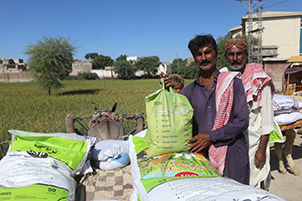
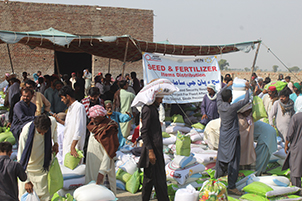
Emergency food security support to vulnerable flood-affected households through activities for the promotion of vegetable cultivation (Feb-Aug 2023).
Project location
Dadu District, Sindh Province
Overview
Kits containing seeds, fertilizers, pesticides, and vegetable growing tools have been distributed to 1,400 households in the Dadu District (one of the worst-affected areas in Sindh). These kits meet the national and state-level FSAC (Food Security and Agriculture Cluster) standards led by the United Nations World Food Programme ('WFP') and the Food and Agriculture Organization of the United Nations ('FAO'), while also being culturally sensitive to the local culture.
56 vegetable cultivation facilitators (28 men and 28 women) were selected from the 1,400 target households. These facilitators received training in vegetable cultivation from agricultural experts and Agriculture Department staff. Each vegetable cultivation facilitator was assigned to 25 beneficiary farm households (1,400 households in total) for on-the-job training. The purpose of vegetable cultivation promotion activities is to improve the knowledge and skills of the target households.
What the assistance will improve
The project will distribute seed and vegetable growing tool kits to 1,400 vulnerable households (approximately 9,100 people) in the Dadu District, Sindh Province, to promote vegetable cultivation. This is aimed at improving the food crisis and increasing the knowledge and skills of the affected people in vegetable cultivation.
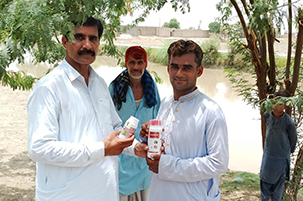
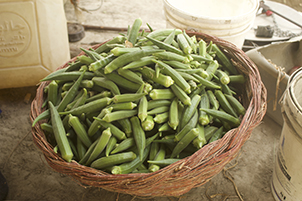
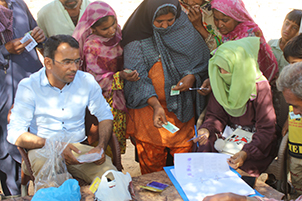
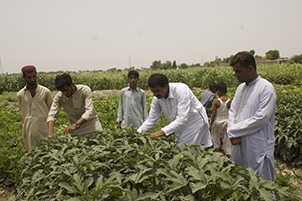
Emergency assistance for flood victims in Dadu district, Sindh and Nowshera district, KP (Sep 2022 - Apr 2023)
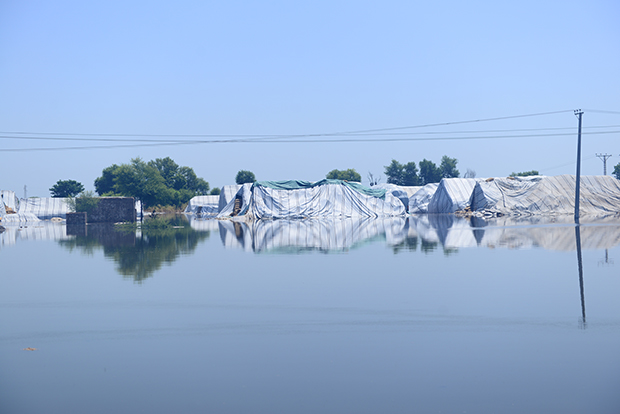
Overview
Record-breaking rainfall since June 2022 has caused much flooding in Pakistan, to the extent that one-third of the country's land area, (which is twice the size of Japan), is now underwater. Immediately after the declaration of a state of national emergency, JEN dispatched staff who have previously worked in Pakistan to the affected areas: Khyber Pakhtunkhwa (KP), Punjab, and Sindh provinces. After conducting surveys, JEN began providing emergency assistance.
With homes, farmlands, and livelihoods swept away and submerged, thousands of families have been displaced on main roads and slightly elevated land to escape the water, living with only the minimum of possessions.
In the Nowshera District, the worst affected area in KP, most livestock were lost, however some farmers managed to evacuate their livestock to higher ground. For the surviving small-scale dairy farmers, the loss of their livestock made it extremely difficult to rebuild their livelihoods. If these farmers can save their livestock, they can feed their people. Livestock feed had been washed away by the floods, so there was an urgent need to provide feed to save the remaining livestock. In consultation with community elders, fodder was distributed to the worst affected households according to surveys.
Sindh, the worst affected area in the Dadu District, received emergency assistance in the form of food packages and daily necessities (e.g. soap, mosquito nets, etc.). With a growing concern of mosquito-borne and water-borne diseases, JEN also distributed supplies to address these concerns. Because of the large scale of the disaster, food and other assistance is planned for the future.
Specific assistance
JEN provided emergency assistance to flood victims in KP and Sindh provinces.
● Distribution of feed for livestock (asset of affected farmers) (Nowshera District, KP, September 2022)
● Distribution of food and supplies to vulnerable flood-affected households (Oct 2022 - Mar 2023, Sindh).
● Distribution of food in collaboration with Zensho Holdings Corporation (Jan-Apr 2023).
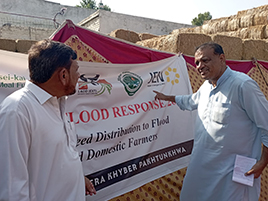
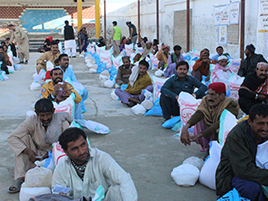
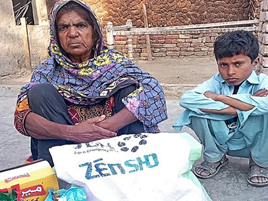
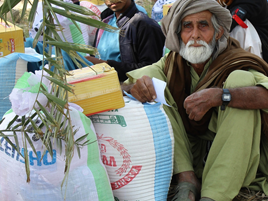
What the assistance will improve
The food crisis will be improved through the distribution of one month's worth of food and supplies to vulnerable households. Hygiene awareness-raising activities will improve the hygiene knowledge of affected people and reduce their vulnerability to infectious diseases during and after the flooding. Fodder distribution will sustain the lives of livestock as a means of livelihood and to provide recovery for small-scale livestock farmers.
Water supply support project for communities in Orakzai District, Khyber Pakhtunkhwa (KP) (from April 2022 to present)
Overview
The project aims to improve water sanitation in targeted communities in Orakzai District, Kohat District, Khyber Pakhtunkhwa (KP), providing safe drinking water to people affected by conflict and terrorism. The project will improve water supply facilities that are dilapidated or remain damaged because of conflict. Drinking water community action groups will be formed for communities to maintain their facilities in a clean manner. Through facility maintenance training, people will understand the proper use of the facilities and a post-project maintenance system for the facilities will also be established. In summary, this support activity will train people to promote water sanitation in the community.
What will the assistance improve
The project aims to ensure that people in conflict-affected areas in the newly merged counties (formerly FATA) in the KP province can safely resettle by ensuring their basic livelihood needs through access to water and sanitation awareness-raising.
